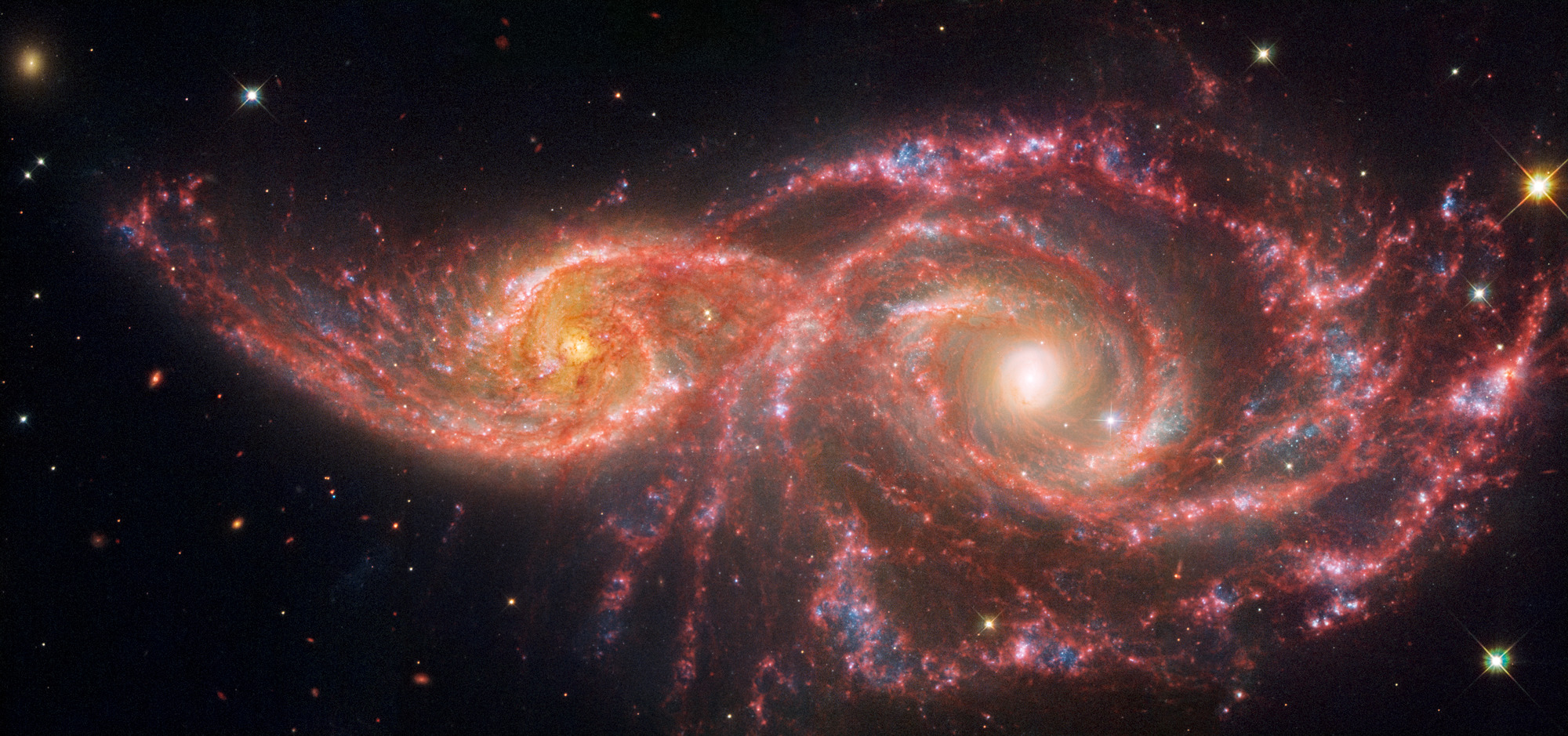An almost galaxy merger has been caught looking like a pair of eyes staring back at us from the depths of space. NGC 2207 and IC 2163 are a pair of galaxies engaged in the celestial tango that will end up in their eventual fusion into a single object. For the last few million years, IC 2163 has been sliding behind the larger NCG 2207. For now, however, they have only grazed each other.
The interaction is slight but profound and this is why the combined efforts of JWST and Hubble are perfect for these observations. JWST brought the mid-infrared details while Hubble revealed the visible and ultraviolet. Each wavelength can be used to track star formation in the galaxy pairs, which is being accentuated by the merging process.
The two gorgeous spirals in all their glory.
Image Credit: NASA, ESA, CSA, STScI
While a galaxy like the Milky Way forms a couple of stars the size of the Sun every year, these galaxies are producing 12 times as many. Our galaxy averages one supernova every 50 years. These two have had seven known supernovae in recent decades. These galaxies are active and the combined observations of JWST and Hubble showcase the activity.
Starbursts spot across the arms that have been twisted by the mutual attraction. The hollows in the red-marked gas are where a supernova has taken place. Spot the bubbling activity across the spiral arms. We are witnessing a snapshot of what will become an incredible merger.
Source Link: Humans Just Stared At The Universe. The Universe Is Staring Back
